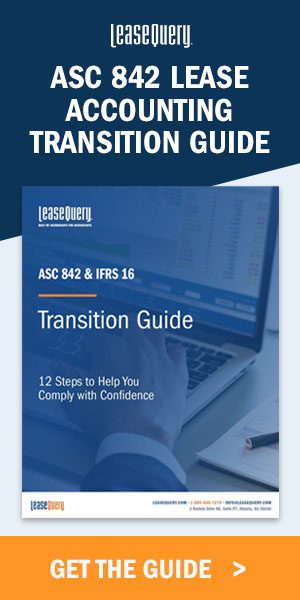This article, "FASB Proposes Delaying New Lease Standards for Private Companies, But There’s No Time to Waste," originally appeared on Protiviti.com.
At the start of 2019, the implementation deadline for the Financial Accounting Standards Board’s (FASB) new lease accounting standard passed for most public companies. FASB has proposed postponing the effective date for privately held organizations to the beginning of 2021, but the pressure remains on those organizations that have been struggling to meet the deadline.
Read more: FASB Proposes Delays to Effective Dates for Four Major Accounting Standards
A survey of chief financial officers (CFOs) by Protiviti and parent company Robert Half found that 44% of private companies have not completed the transition to the new lease accounting standard. Eighteen percent report that they have yet to begin the process.
See the survey results by company size.
View the survey results by industry.
FASB’s proposed delay would buy private and small public companies
more time to comply, but given the complexity of the new standard, companies
can’t afford to procrastinate because the work involved can be intense. Private
companies with decentralized business units and high lease volumes will face
the biggest challenges, but any firm still in the early stages of the
compliance process — or that hasn’t started at all — will soon find options
dwindling.
The new standard virtually eliminates off-balance sheet
accounting and affects common metrics such as leverage and liquidity ratios.
Given the prevalence of leasing and renting, including common office items like
coffee machines, the new adjustments to the standard impacts almost every
organization across all industries.
Specific changes that will affect accounting departments to
differing degrees include:
- Updating software or installing new accounting systems
- Writing new policies and procedures
- Training staff and providing support through the
transition period - Guiding clients as they review their approach to
leasing - Taking a proactive approach to change management
The sooner a company starts, the more prepared it will be to
comply with the changes. As with new revenue recognition standards adopted over
the past couple of years, organizations will want to approach their transition
to the new lease standard as a change management project. That process should
include the following eight steps:
1. Analyze the
current state
Every company should have a dedicated steering committee to
oversee each step of the transition. Begin with a full diagnostic and readiness
assessment to determine the required steps. Map processes and chart
capabilities to identify processes and procedures that will need to change.
2. Educate senior
management
All decision makers in the organization need to be brought
up to speed on the implications of the new standard. This group should include
non-accounting staff, such as the chief information officer (CIO) or vice
president of IT, who are likely the people overseeing software and system
changes. The transition committee may want to bring together additional
stakeholders to talk about what the changes to lease accounting mean at an
executive level.
3. Identify staff who
will be involved in the process
The next group of people to speak with are the employees who will implement the standard on a day-to-day basis. They will have plenty of questions about how this change affects their role, what additional duties they’ll have and how they’ll be trained. These workers will also have insights into the transition. So, companies need to make sure the steering committee has a mechanism in place to get their ideas, feedback and ultimate buy-in.
4. Train staff
Before implementing new processes, everyone affected by the
change will need to know not only what additional duties they’ll have, but also
how to execute those tasks. Training should continue until everyone is
comfortable with the change. Periodic brush-up courses can help ensure that employees
are adapting effectively.
5. Identify internal
skills gaps
The only way to know whether a team has the skills required
to comply with the new lease accounting standard is to assess which elements of
the process employees can or cannot handle.
6. Determine whether
more support is needed
If existing staff are unable to manage all elements of the transition alone, the organization may need to tap outside resources to complete the project successfully. These resources could include a trainer to teach new skills, process specialists, or a managed business services partner who can guide the entire department through the transition and facilitate the change management process.
According to the Robert Half and Protiviti CFO survey, about
six in 10 CFOs (61%) said they would use a combination of external and internal
resources or external resources only to staff lease accounting change initiatives.
7. Turn to advanced
technologies
Advanced technologies can make compliance faster and more effective, while allowing staff to focus on more strategic aspects of the transition. It is important, however, to manage digital change effectively to mitigate any potential disruption. A separate CFO survey by Robert Half Management Resources found that regulatory compliance challenges and keeping pace with technology are the greatest pressure points impacting today’s finance teams.
8. Communicate
milestones and deadlines
As the transition to the new lease accounting standard draws
closer, clear communication from management is critical. Too often, projects
fall behind because employees forget or aren’t sure when something is due. It
is important to strike a balance between checking on progress and
micromanaging.
Even with the additional time to be provided by FASB’s proposed postponement, organizations may want to consider turning to a managed services provider for help, depending on the scope and complexity of the work required. Robert Half and Protiviti’s Managed Solutions team, for example, recently assisted a manufacturing company with adopting the new lease accounting standard, including by helping to conduct a scoping assessment of the company’s project and introducing machine learning techniques for a broader data-abstraction effort.



